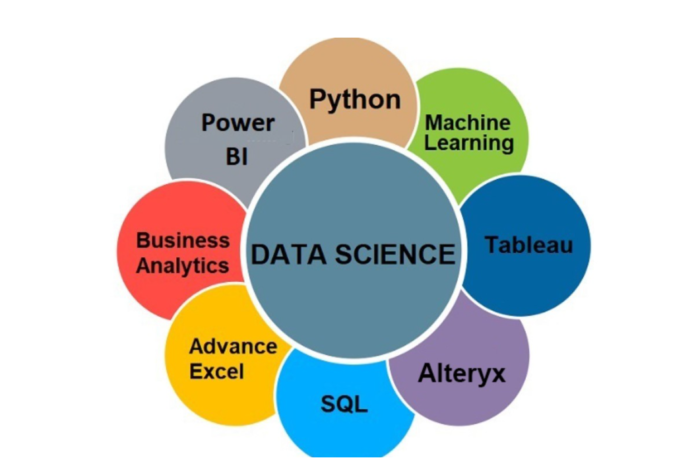Artificial intelligence (AI) is increasingly becoming an invisible force that seamlessly integrates into our daily lives. Invisible AI refers to the technology that works quietly in the background, enhancing user experiences without explicit interaction. From personalized recommendations to automated routines, invisible AI aims to make our lives easier by understanding our preferences and behaviors. For those pursuing a data science course, understanding how invisible AI functions is crucial for creating solutions that are both intuitive and impactful.
What is Invisible AI?
Invisible AI refers to AI technologies that operate behind the scenes, providing value without requiring direct user input. This includes systems that anticipate user needs, automate routine tasks, and personalize experiences based on data-driven insights. For students in a data science course in Kolkata, learning about invisible AI is key to building intelligent systems that are seamlessly integrated into everyday activities.
Applications of Invisible AI in Everyday Life
Invisible AI is embedded in many aspects of our lives, often without us even realizing it:
- Voice Assistants: Voice assistants like Alexa and Google Assistant use AI to provide personalized responses and automate tasks, often based on previous interactions.
- Recommendation Systems: Platforms like Netflix and Amazon use AI to recommend content or various products based on user preferences and viewing or purchasing history.
- Smart Home Automation: Smart home devices use AI to automate tasks like adjusting the thermostat, turning off lights, or locking doors, based on user habits.
For those pursuing a data science course, understanding these applications provides insights into how data science can be used to create seamless and intelligent user experiences.
Building Dynamic Models for Seamless User Experiences
Creating invisible AI requires building dynamic models that learn from user behavior over time. These models use data from various sources, such as browsing history, app usage, and sensor data, to predict what users need and when they need it. For students in a data science course in Kolkata, learning to build these models is crucial for developing AI solutions that adapt to individual users.
Data Sources for Invisible AI
Invisible AI relies on a variety of data sources to operate effectively:
- User Interaction Data: Data from user interactions, such as clicks, searches, and app usage, is used to understand user preferences and tailor various experiences accordingly.
- Sensor Data: Data from sensors, such as those in smart home devices, is used to automate actions based on environmental changes, such as temperature or lighting.
- Social Media Data: Social media platforms provide valuable data about user interests, which can be used to deliver personalized content and advertisements.
For those enrolled in a data science course, learning to work with these data sources is essential for building effective invisible AI systems.
Machine Learning in Invisible AI
Machine learning plays a crucial role in invisible AI by helping to identify patterns and make predictions based on user data. Techniques such as collaborative filtering, clustering, and natural language processing are used to analyze user behavior and preferences. For instance, machine learning (ML) can be employed to recommend products, predict user actions, or automate tasks in smart homes.
For students in a data science course in Kolkata, understanding how to apply machine learning to invisible AI is an important skill for developing advanced and personalized user experiences.
Personalization Without Explicit Interaction
Invisible AI is all about personalization without requiring explicit user input. For example, streaming platforms automatically recommend shows based on viewing history, while smart thermostats adjust temperatures based on past behavior. These AI systems learn from implicit user feedback and continuously improve their predictions to provide a personalized experience.
For those in a data science course, learning how to use implicit data to build personalized models is an important aspect of developing invisible AI solutions.
Real-Time Data Processing for Seamless Experiences
Real-time data processing is crucial for providing seamless user experiences. Invisible AI systems must be able to process data as it is generated to provide timely and relevant responses. For example, a voice assistant must process voice commands in real time to provide accurate answers or perform requested actions.
For students in a data science course in Kolkata, learning how to work with real-time data and develop models that provide immediate insights is an important skill for building invisible AI systems.
Case Study: Personalized Content Recommendations
A prime example of invisible AI in action is personalized content recommendations on streaming platforms. By analyzing user viewing history, ratings, and search behavior, data scientists can create models that predict what content users are likely to enjoy. These models run in the background, continuously updating recommendations as user preferences evolve.
For those pursuing a data science course, studying personalized content recommendations provides valuable insights into how data science can be used to enhance user experiences without explicit interaction.
Challenges in Developing Invisible AI
Despite its potential, developing invisible AI comes with challenges. One of the critical challenges is data privacy. Collecting and analyzing user data without explicit consent can raise ethical concerns, making it important to implement privacy-preserving measures. Another challenge is ensuring that various AI systems do not become overly intrusive, which could lead to a negative user experience.
For students in a data science course, learning how to address these challenges is crucial for building responsible and effective invisible AI systems.
Ethical Considerations in Invisible AI
Using invisible AI raises ethical considerations, particularly around data privacy and user consent. Data scientists must ensure that data is collected and used ethically, and that users are informed about how their data is being used. Additionally, AI systems should be actively designed to enhance user experiences without being manipulative or intrusive.
For those in a data science course in Kolkata, understanding the ethical implications of invisible AI is essential for building responsible and trustworthy systems.
Best Practices for Developing Invisible AI Models
- User-Centric Design: AI systems should be specifically designed with the specific user in mind, ensuring that they enhance the user experience without being intrusive.
- Data Privacy Assurance: Ensuring that user data is collected and used responsibly is crucial for maintaining trust in invisible AI systems.
- Continuous Learning: Invisible AI systems should continuously learn from user interactions to improve their predictions and provide more relevant experiences.
For students pursuing a data science course, following these best practices is essential for developing invisible AI models that provide value while respecting user privacy.
Conclusion
Invisible AI is transforming the way we interact with technology by providing seamless user experiences without explicit interaction. By analyzing data from numerous sources, using machine learning techniques, and processing data in real time, data scientists can create AI systems that enhance user experiences in a subtle yet impactful way. For students in a data science course in Kolkata, learning about invisible AI is a valuable way to contribute to the development of intuitive and user-friendly technologies.
As AI evolves, the importance of creating invisible, user-centric systems will only grow. By developing ethical, effective, and personalized AI models, data scientists can help create technologies that blend seamlessly into our daily lives, making them more convenient and enjoyable.
BUSINESS DETAILS:
NAME: ExcelR- Data Science, Data Analyst, Business Analyst Course Training in Kolkata
ADDRESS: B, Ghosh Building, 19/1, Camac St, opposite Fort Knox, 2nd Floor, Elgin, Kolkata, West Bengal 700017
PHONE NO: 08591364838
EMAIL- enquiry@excelr.com
WORKING HOURS: MON-SAT [10AM-7PM]

